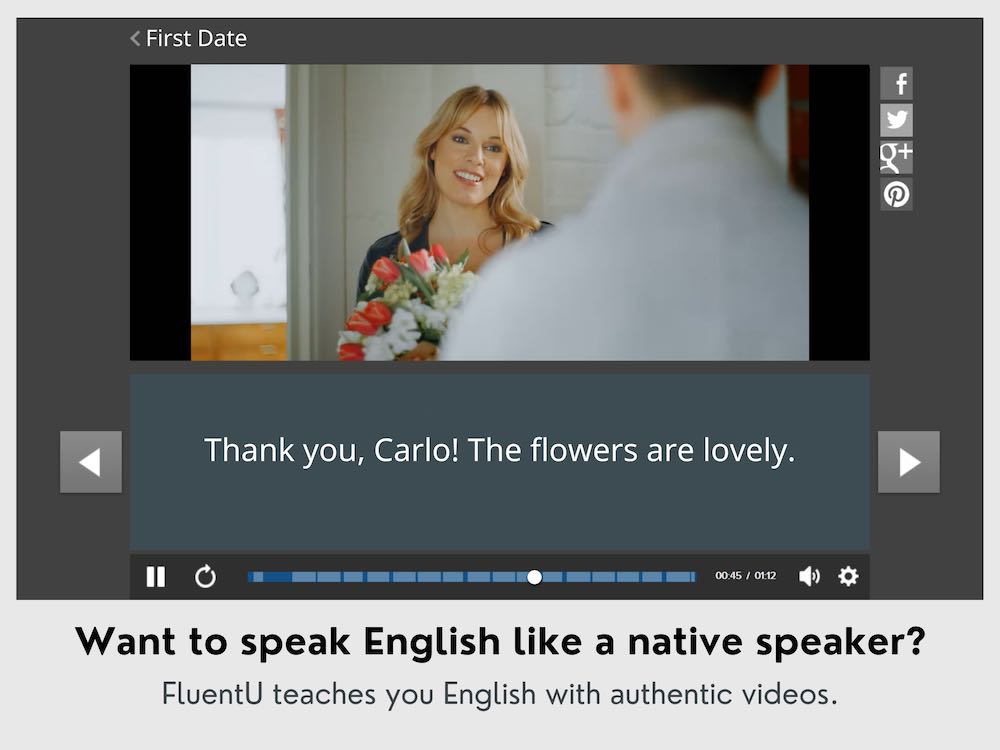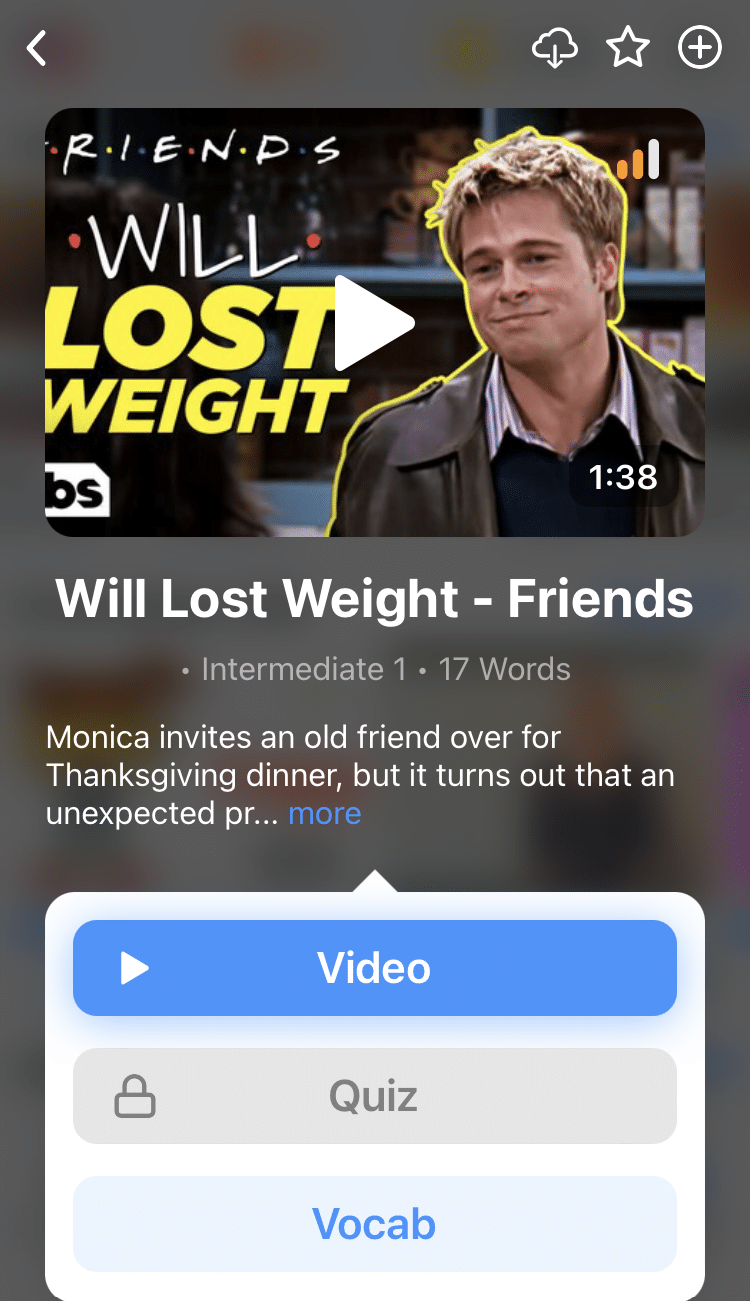
The Complete Guide to the Present Simple Tense in English
“Yesterday is history, tomorrow is a mystery, but today is a gift: that’s why we call it the present.”
This play on words was written by cartoonist Bil Keane, and it’s meant to make us grateful to be alive.
Whether you observe the changing seasons, discuss your emotions with a good friend or go on a relaxing camping trip, there are many things happening all around us to be grateful for.
So, how do we talk about the things happening at the present time?
Well, one of the English verb tenses we can use is called the present simple! Let’s find out how to form this tense and use it naturally in your English.
Download: This blog post is available as a convenient and portable PDF that you can take anywhere. Click here to get a copy. (Download)
Where to Practice the Present Simple in English
The best way to understand and know how to use the present simple in English conversations is to practice it. There are many websites to practice English grammar online, and I suggest you check out the following ones to get used to using the present simple in English.
For starters, log into englishpage.com for two online quizzes. The first is a simple fill-in-the-blank quiz where learners must write in the correct form of the English present simple. The second is a written letter that also needs the English present simple to be filled in the blanks.
You can also practice the English present simple with Agendaweb’s multiple-choice quiz and Really Learn English’s collection of fill-in-the-blank worksheets.
Using an immersion program is another great way to study the present tense in context. FluentU is a program that lets you study tenses, vocabulary and other English concepts through English-language videos.
FluentU takes authentic videos—like music videos, movie trailers, news and inspiring talks—and turns them into personalized language learning lessons.
You can try FluentU for free for 2 weeks. Check out the website or download the iOS app or Android app.
P.S. Click here to take advantage of our current sale! (Expires at the end of this month.)

Ego4U gives you the opportunity to practice with many types of exercises, like fill-in-the-blank exercises and multiple-choice questions.
In the meantime, have a look at this video to learn 50 common English verbs. When you finish learning these verbs, you’ll have plenty of material to practice the present simple with:
What Is the Present Simple in English?
The present simple in English is used mainly to talk about things that are happening in the present. That means it’s used to talk about things that are happening right now, not in the past or the future.
This tense is also called “simple” because only a single word is used to form it—the main verb. There are no additional verbs (called “auxiliaries”) that are needed to form the present simple tense in English.
One important thing to note, however, is that even though the present simple tense is used to talk about things happening currently, that doesn’t mean the present simple is used to talk about things that are in the middle of being done.
The present progressive is used for that.
For example, if we’re in the middle of cooking dinner, we’d say, “I am cooking dinner.” This is the present progressive, not the present simple.
The present simple would be, “I cook dinner,” but this sentence doesn’t show us that the actual task of cooking dinner is being done as we speak.
How to Use the Present Simple in English
Let’s take a look at when and how you’d use the present simple in English.
To talk about generalities or facts.
The present simple can be used to tell us general actions that happen in the present time or tell us a fact or truth.
For example, the sentence “lions hunt and eat meat” tells us a fact about lions, and we use the present simple to say that this is a general truth.
To talk about circumstances that don’t change.
When there’s a situation or a circumstance that doesn’t look like it’s going to change anytime soon, we can also use the present simple.
For example, the sentence “Linda lives in a big house” shows us that living in a large home is Linda’s current situation, and that isn’t changing.
To talk about habits or actions that repeat.
To talk about things that are habits (things you do regularly) or that are repeated, we also use the present simple. We could use the present simple in the sentence, “I read the newspaper every morning,” for example, to show that reading the newspaper is a habit.
To express feelings or desires.
If we want to show how we’re feeling or what we want, we need to use the present simple in English. For example, this tense is needed to say, “Tom feels sad” or “I want to eat salmon for dinner.”
To talk about things that will happen in the near future.
Even though the future simple exists in English, the present simple can be used to talk about things that are about to happen or that we are planning to do. For example, in the sentence, “the movie starts at 7 p.m. tonight,” we’re talking about an action in the near future that we know will happen.
To give directions or instructions.
Aside from these uses, the present simple can also be used to give directions or instructions. For example, we might read a recipe that says, “to make a cake, first you measure the flour, then you crack two eggs, then you mix the ingredients…”
These types of instructions or directions can also be given in the English imperative (command) form, however.
Regular Verbs in the Present Simple Tense
Did I mention that forming the present simple in English is actually pretty simple?
Well, it is!
In fact, for most verbs, the verb itself doesn’t change for most subjects (the word that comes before the verb and does the action).
That means that for the subjects “I,” “you,” “we,” “they” and “you all,” the verb stays the way it’s written in the dictionary.
The only change to the dictionary form is for the subjects “it,” “he” and “she.” Here, the verb takes an additional -s at the end.
Let’s take a look at how this pattern works for most verbs like in the verb play:
- I play
- You play
- He plays
- She plays
- It plays
- We play
- You all play
- They play
This pattern can be used for most other verbs, except for a few situations as shown in the next section.
Irregular Verbs in the Present Simple Tense
The good thing about the present simple in English is that there aren’t too many irregularities (things that don’t follow the rule) to keep track of. There are some exceptions to the rule, however.
For starters, there are some completely irregular verbs in the present simple, such as “to be” and “to have.”
These do not follow the rule from the previous section, and they should be memorized on their own.
- I am, you are, he/she/it is, we are, you all are, they are.
- I have, you have, he/she/it has, we have, you all have, they have.
Another rule is that verbs that end in a vowel (an a, e, i, o or u) add an extra -e to the third person singular (or he/she/it) form. For example, the verb “go” ends in an -o, so we get “he/she/it goes.”
For verbs that end in the letters -s, -z, -ch, -sh and -x, we add an -e in the third person singular (he/she/it) form as well. This gives us forms such as “he/she/it watches,” “he/she/it wishes” and “he/she/it tosses.”
Questions and Negatives in the Present Simple Tense
Making questions and making a sentence negative is a little tricky in the present simple in English. In fact, both questions and negative sentence constructions use the verb “to do.”
To start, we need to know that the verb “do” is changed to match the subject. For example:
- I do
- You do
- He, she, it does
- We do
- You all do
- They do
For simple questions, the “do” word goes to the beginning of the sentence followed by the subject, and the main verb is unchanged.
For example, we can ask the questions:
“Do you like fish?”
“Does he play the piano?”
Notice how the verb “do” changed to match the subject “he” in the second question, and the verbs “like” and “play” don’t change at all from their dictionary form.
For other types of questions with a WH- word (such as who, what, where, when, why and how) the “do” word goes after the WH- question word.
This gives us questions like:
“What does he want?”
“Where do you live?”
Notice again that the “do” word changes to match the subject of the sentence and the main verb doesn’t change.
For negative sentences in the present simple, add in the “do” word after the subject, make sure it agrees and follow it by “not.” Again, the other verb remains unchanged.
For example:
“I do not like tomatoes.”
“He does not know the answer.”
Bil Keane was right—today is a gift. So with all your knowledge of the present simple in English, you can now describe and enjoy it!
And One More Thing...
If you like learning English through movies and online media, you should also check out FluentU. FluentU lets you learn English from popular talk shows, catchy music videos and funny commercials, as you can see here:
The FluentU app and website makes it really easy to watch English videos. There are captions that are interactive. That means you can tap on any word to see an image, definition, and useful examples.
For example, when you tap on the word "searching," you see this:
Learn all the vocabulary in any video with quizzes. Swipe left or right to see more examples for the word you’re learning.

FluentU helps you learn fast with useful questions and multiple examples. Learn more.
The best part? FluentU remembers the vocabulary that you’re learning. It gives you extra practice with difficult words—and reminds you when it’s time to review what you’ve learned. You have a truly personalized experience.
Start using the FluentU website on your computer or tablet or, better yet, download the FluentU app from the iTunes or Google Play store. Click here to take advantage of our current sale! (Expires at the end of this month.)











